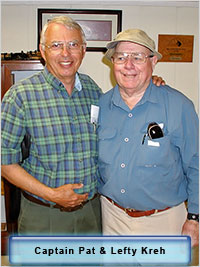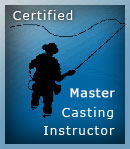Effective Weedless Flies
Out in the Gulf, a weedline would be a great opportunity to find a variety of gamefish. In shallow water, weeds can be a real nuisance, especially when fly-fishing. The “dog days of summer,” bring weeds and floating grass that can made a day of fishing very trying. Last evening I was out with a friend and we fished the early stages of an incoming tide where redfish mixed with mullet in very skinny grass covered water. My friend’s Exude tail on a light jig head easily slid thru the grass as the sides of the plastic bait protected the hook, which rode point up. A Texas rigged Slugo-type bait is also very weedless. Johnson silver minnows with a built in weed guard could also be used in this instance to avoid constant snags and fouling. When fly-fishing, do we have any options to make life easier for us during the summer months?
During the closed snook season, I love to fish docks close to the passes, especially at night. When the wind is blowing, which is most of the time, docks on the windward side always have weeds stacked against the shoreline. Snook can be seen in and around the weeds where a cast with most flies will foul when stripped a few feet. These fish will never show interest in a hook draped with “greens.” One option is to use a surface offering made of spun deer hair, like a Dahlberg Diver that is designed to ride with the hook point up, or where the deer hair is not trimmed near the hook point. If you happen to have your fly land on the dock or drape over one of the lines on the dock it will not hookup if gently teased past the obstruction. Mangrove shorelines require accurate casting to get at snook and reds that love to hide under the overhanging branches. An exposed hook will snag and require moving the boat to the snag to free it, ruining the whole area. The vertical deer hair will protect the hook, but the soft texture will compress when a fish engulfs the fly. When fishing for largemouth bass with flies, a deer hair mouse designed like this is very effective around lily pads and thick grass. Will a snook take a mouse?
Bendback fly designs are very weedless, especially when a stiff material is used to cover the hook point and they are dressed a little on the heavy side. I often use a combination of synthetic and natural deer hair for this application. Using light wire hooks without additional weight will also help.
Monofilament weed guards have been used for years and have many designs. Mason is a good material for this choice as it is stiffer than most leader material. Most tackle shops have it in small spools. Fifteen to thirty pound test will suit most situations depending on hook size. A single or double strand tied at the bend of the hook when the fly is first started is brought to the eye of the hook and secured as a last step before finishing the head. The “loop” that is left around the hook point protects it. Monofilament tied at right angles to the hook near the eye is frequently used in single or double strands. The tying thread is wrapped behind to keep it in position before the head is completed. This last method is my least favorite.
 A better variation of this is one that Lefty Kreh prefers and uses almost exclusively. Instead of plain mono, he used nylon-coated wire, the type used to make bite guards or wire leaders for toothy predators. Berkley makes a product, Steelon, in thirty-pound test, which I use for all weed guards attached to the head of the fly. A piece is cut from the thirty-foot spool that is long enough to cover the hook point. It is attached as the head is completed. Flatten the end with small pliers and tie it in place. A few wraps of thread in front of, as well as behind the wire, will secure it. Use head cement, like Dave’s Flexament, that will penetrate the thread to really secure the wire to the hook. Cut the end so that it’s slightly longer than the hook point and also flatten this end finishing it at right angles to the hook.
A better variation of this is one that Lefty Kreh prefers and uses almost exclusively. Instead of plain mono, he used nylon-coated wire, the type used to make bite guards or wire leaders for toothy predators. Berkley makes a product, Steelon, in thirty-pound test, which I use for all weed guards attached to the head of the fly. A piece is cut from the thirty-foot spool that is long enough to cover the hook point. It is attached as the head is completed. Flatten the end with small pliers and tie it in place. A few wraps of thread in front of, as well as behind the wire, will secure it. Use head cement, like Dave’s Flexament, that will penetrate the thread to really secure the wire to the hook. Cut the end so that it’s slightly longer than the hook point and also flatten this end finishing it at right angles to the hook.
Steelon can also be used to make an effective weedguard for hard body poppers. For foam heads, heat a needle and penetrate the body at a forty-five degree angle to the hook. Cement the nylon coated wire in place with crazy glue or epoxy. Cork or balsa bodies are best prepared with a Dremel or small drill using a bit a little larger than the wire’s diameter.
Don’t let floating vegetation discourage you from using your fly rod. Morning and evening have many aggressive fish prowling the flats. It’s one of the best times for skinny water action. Even if you don’t tie your own flies, many of the above applications can be added to your favorite finished flies in a few minutes. If you need any additional information, feel free to contact me.
![]()



